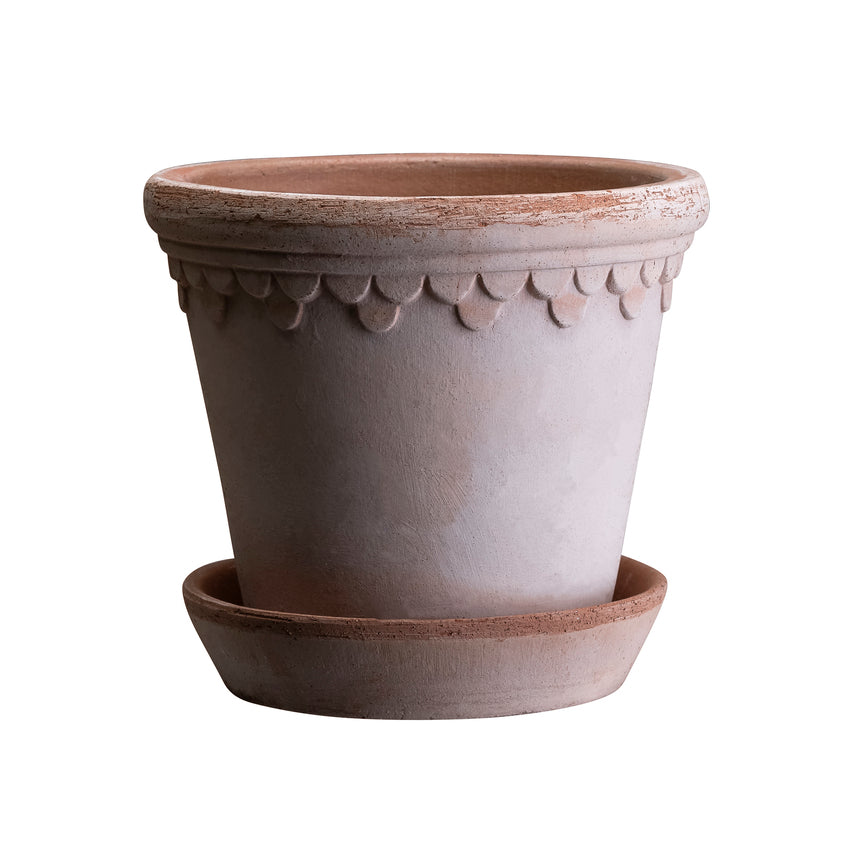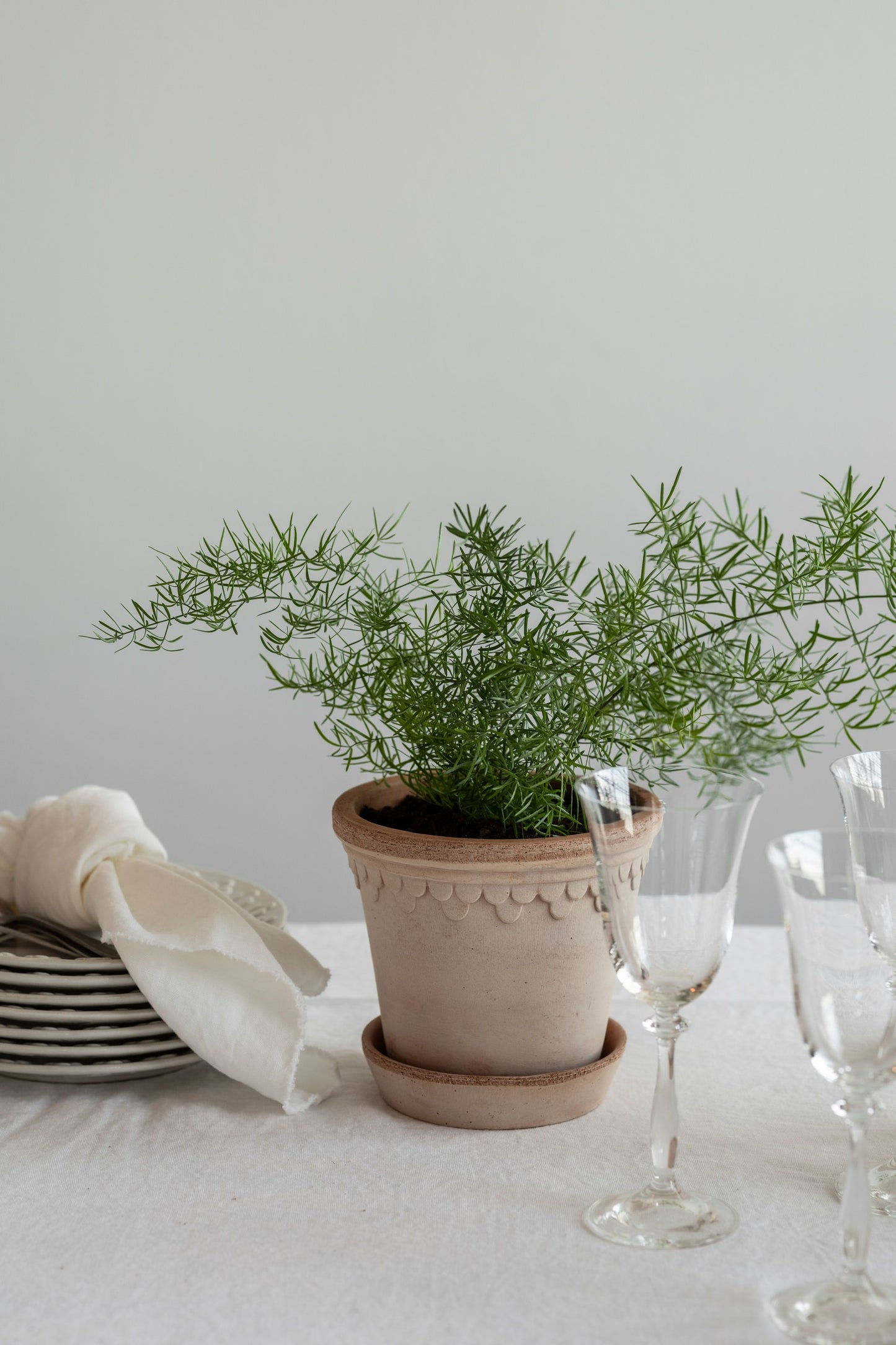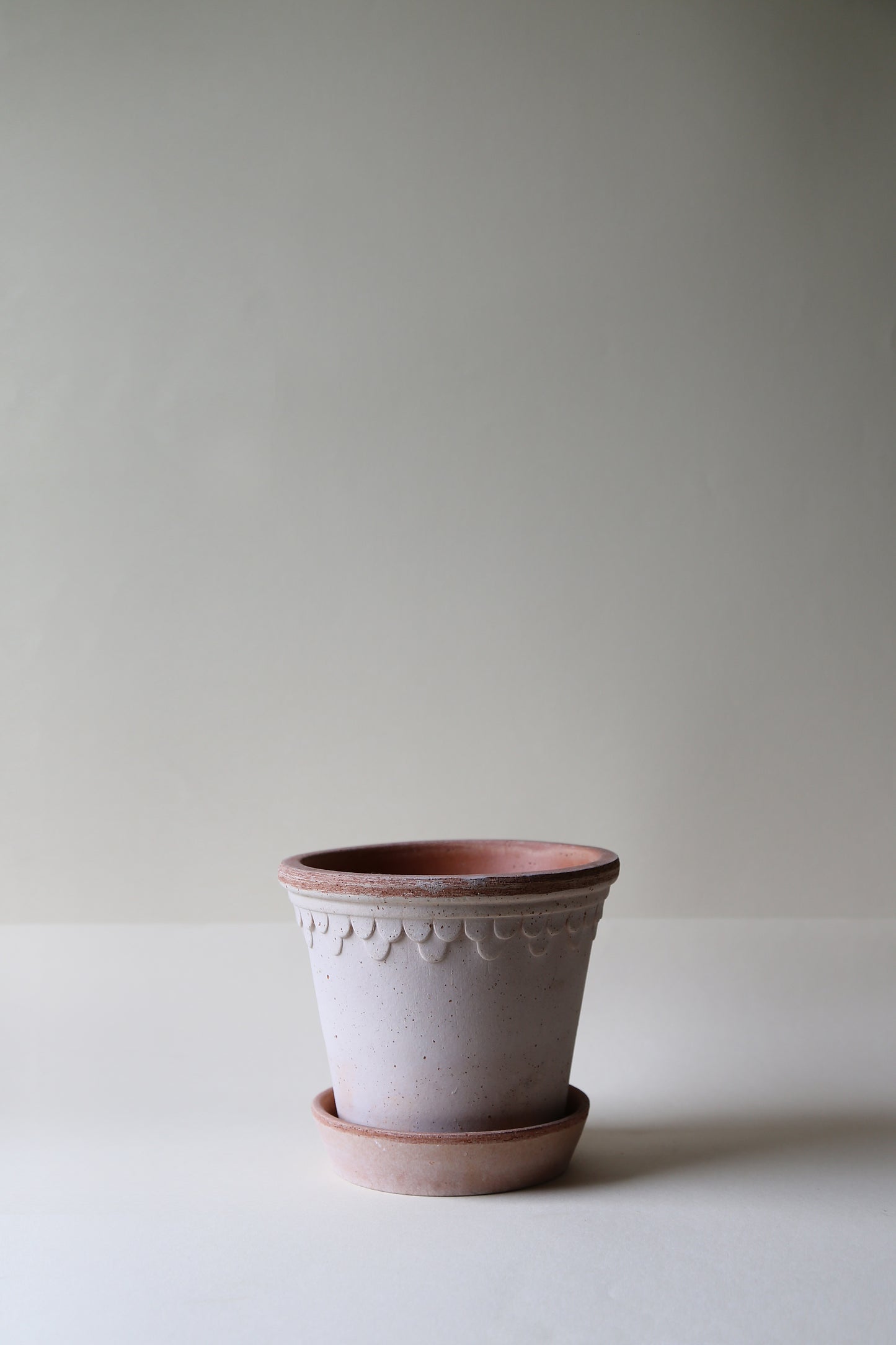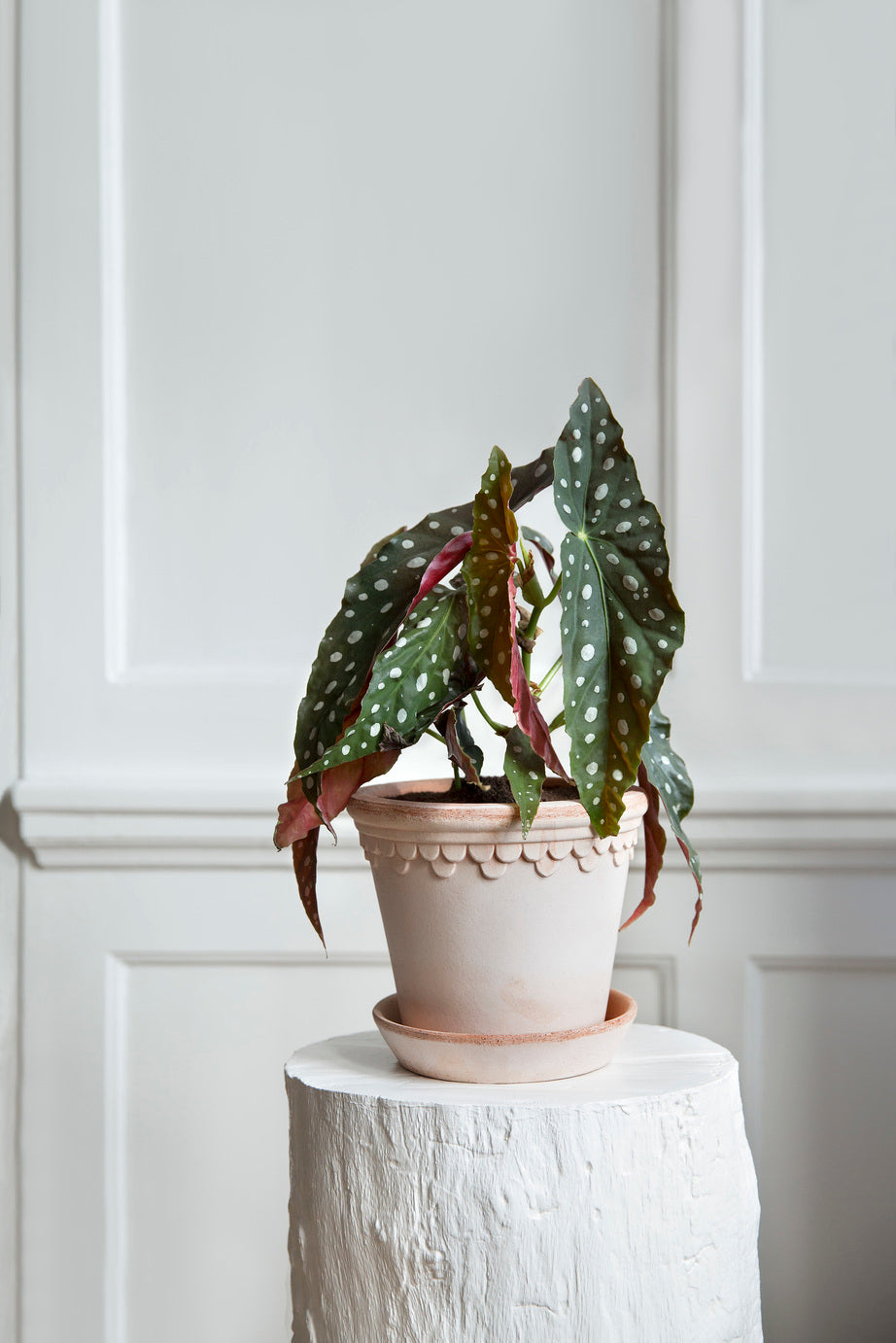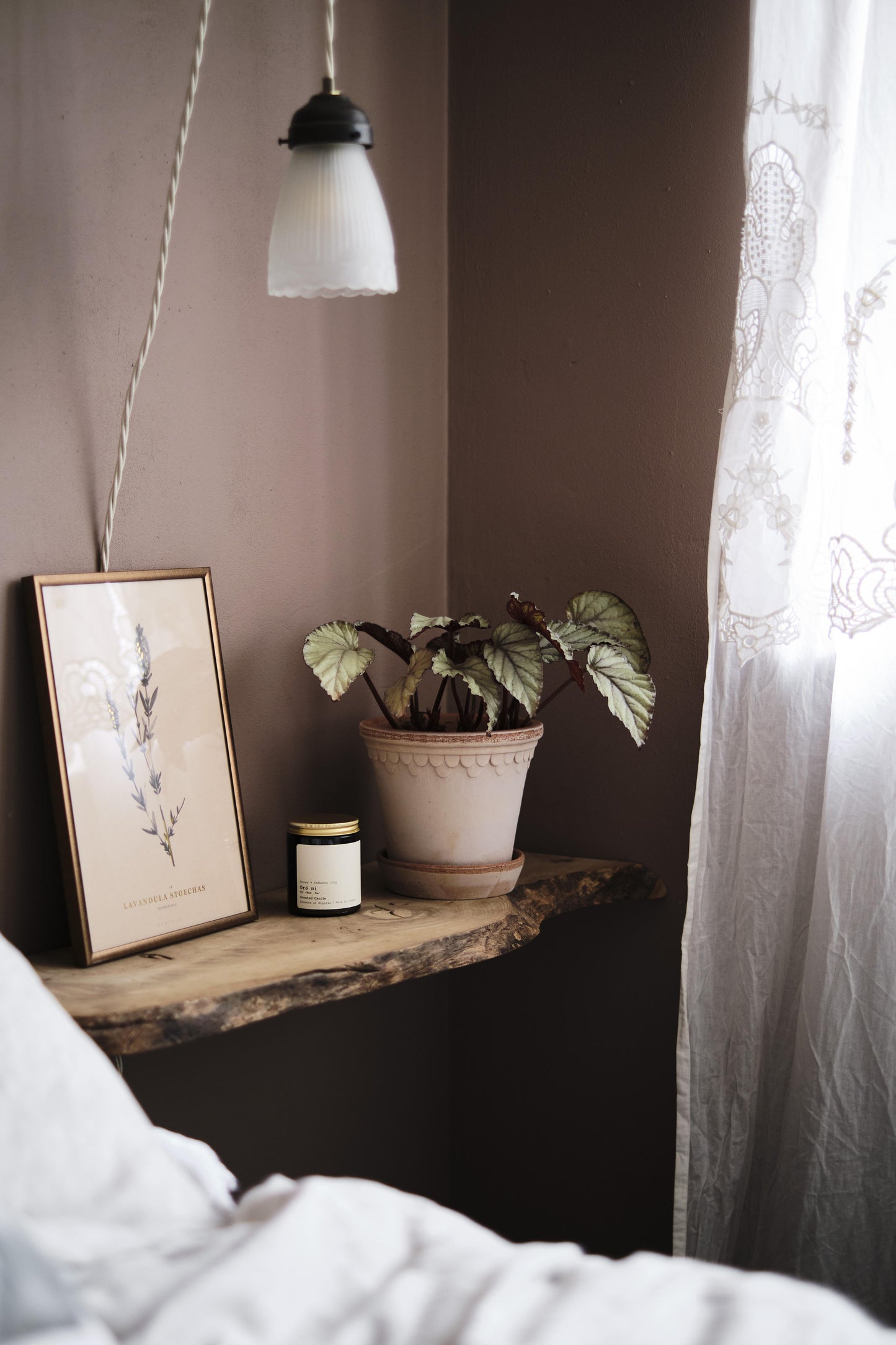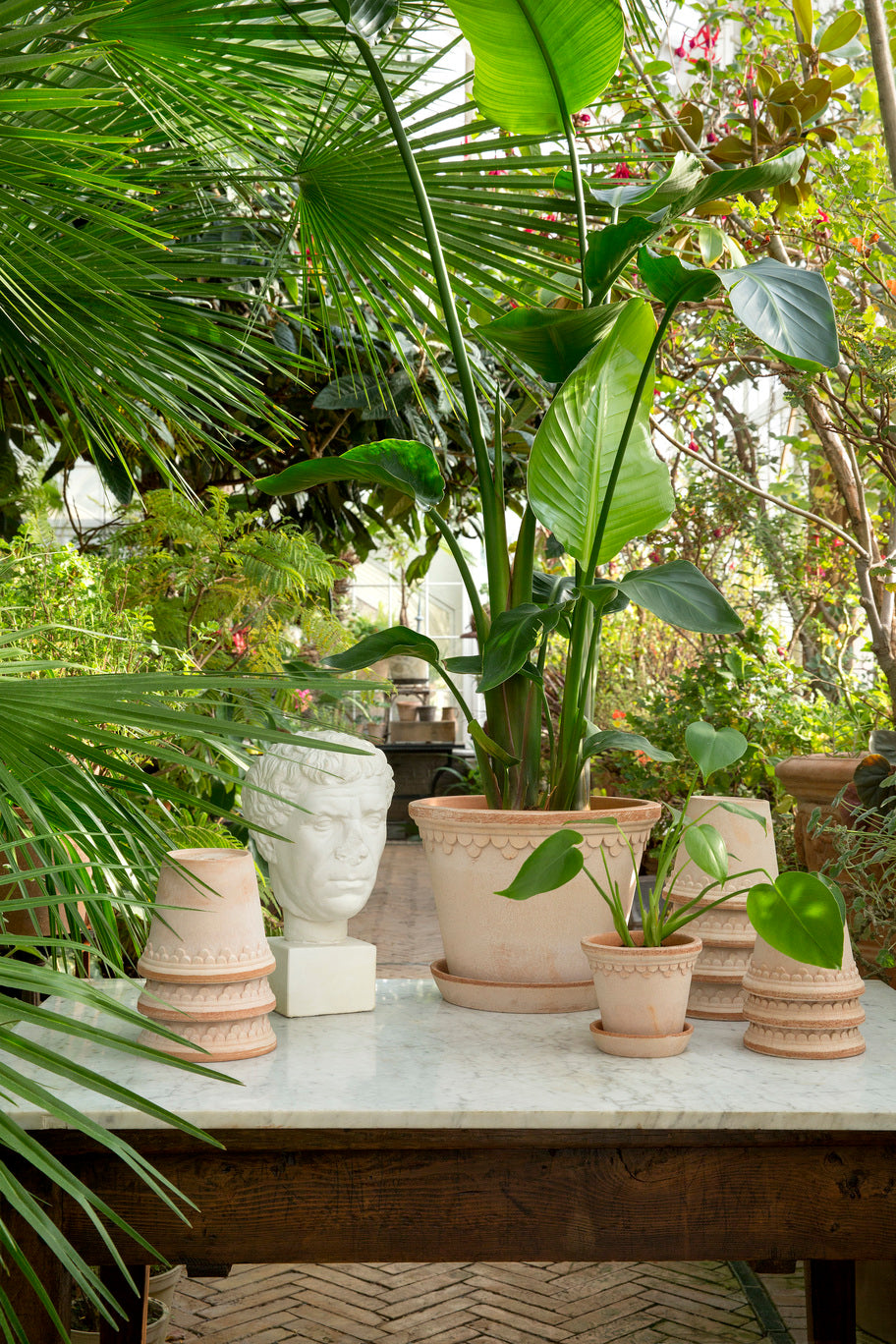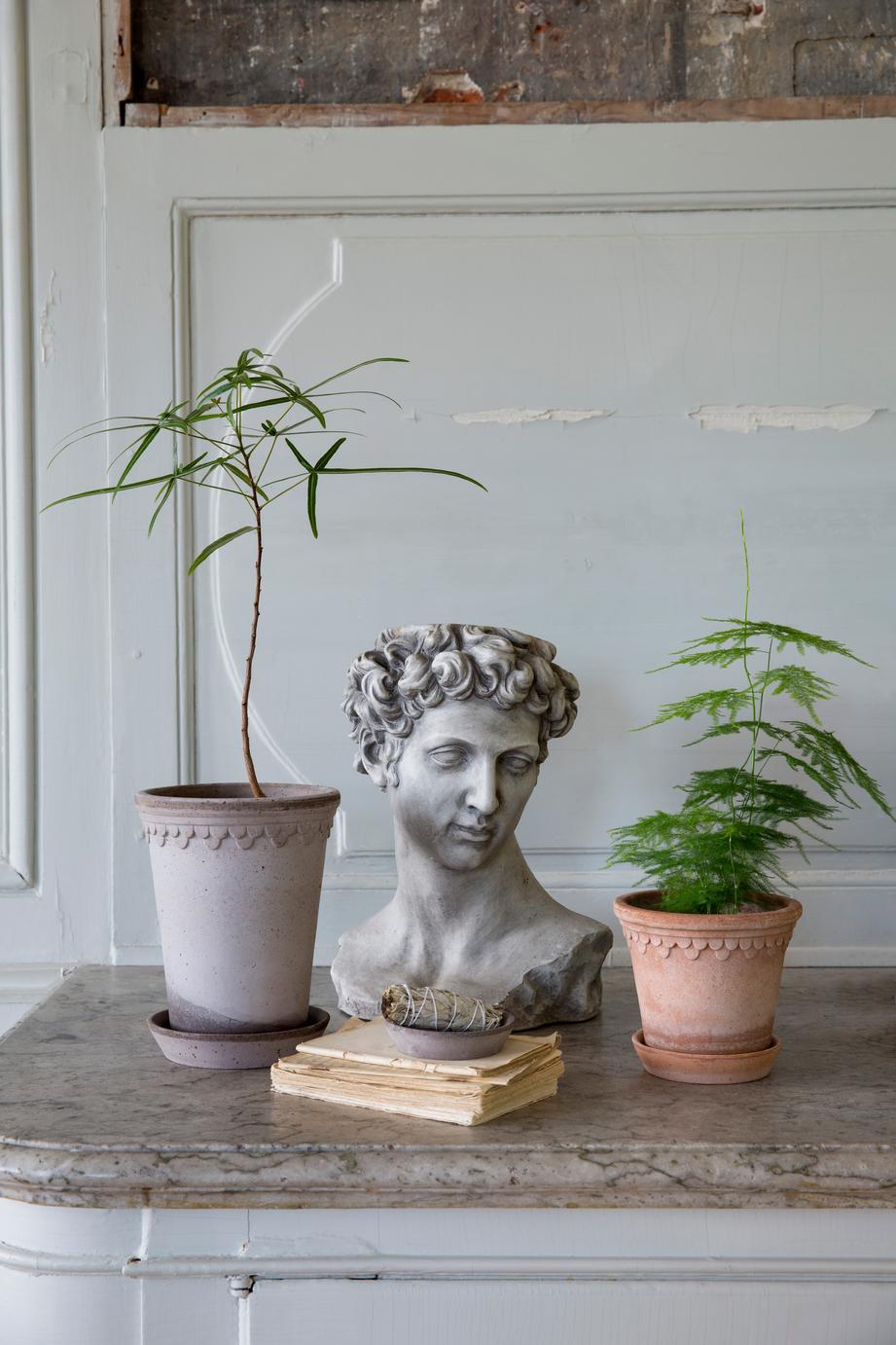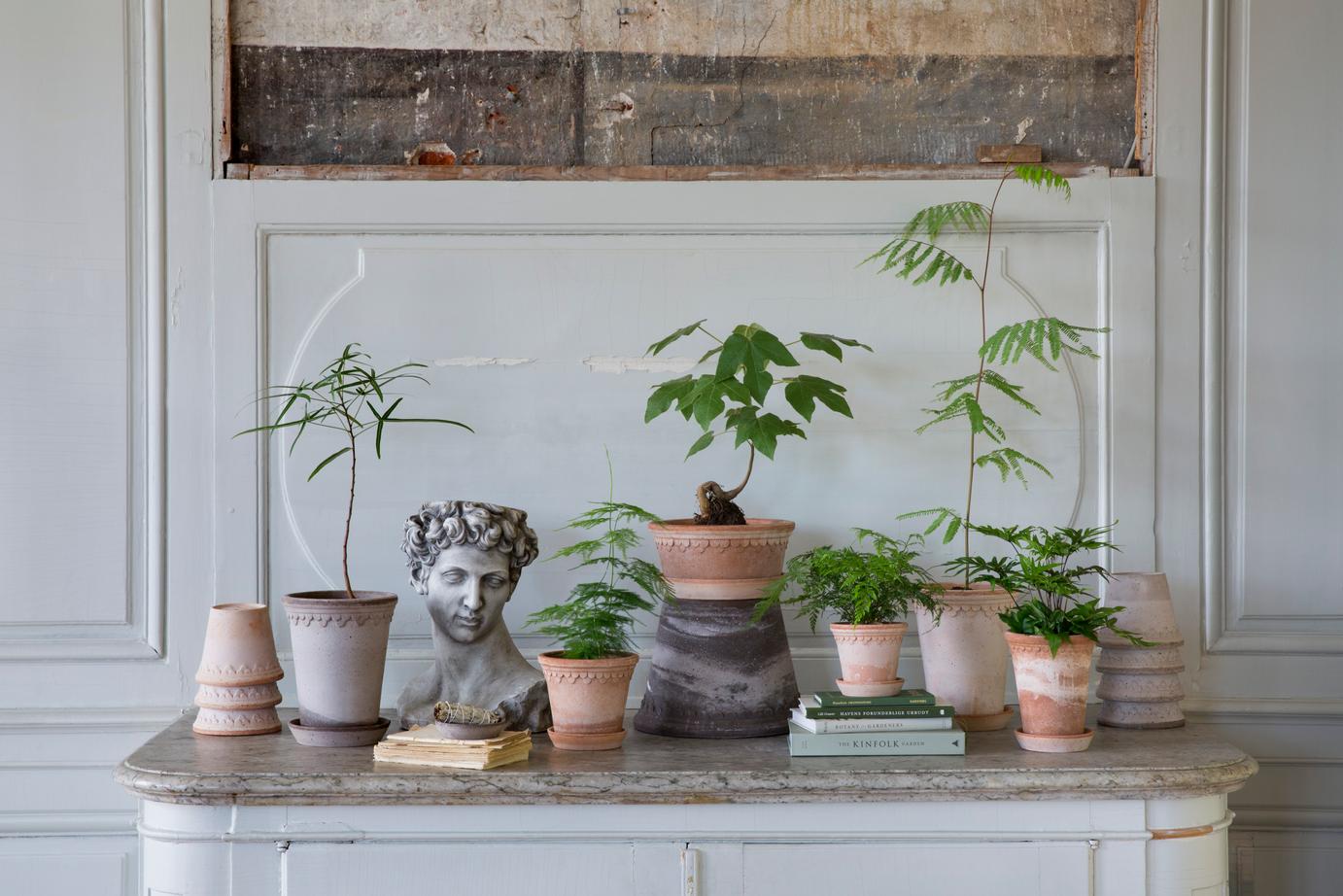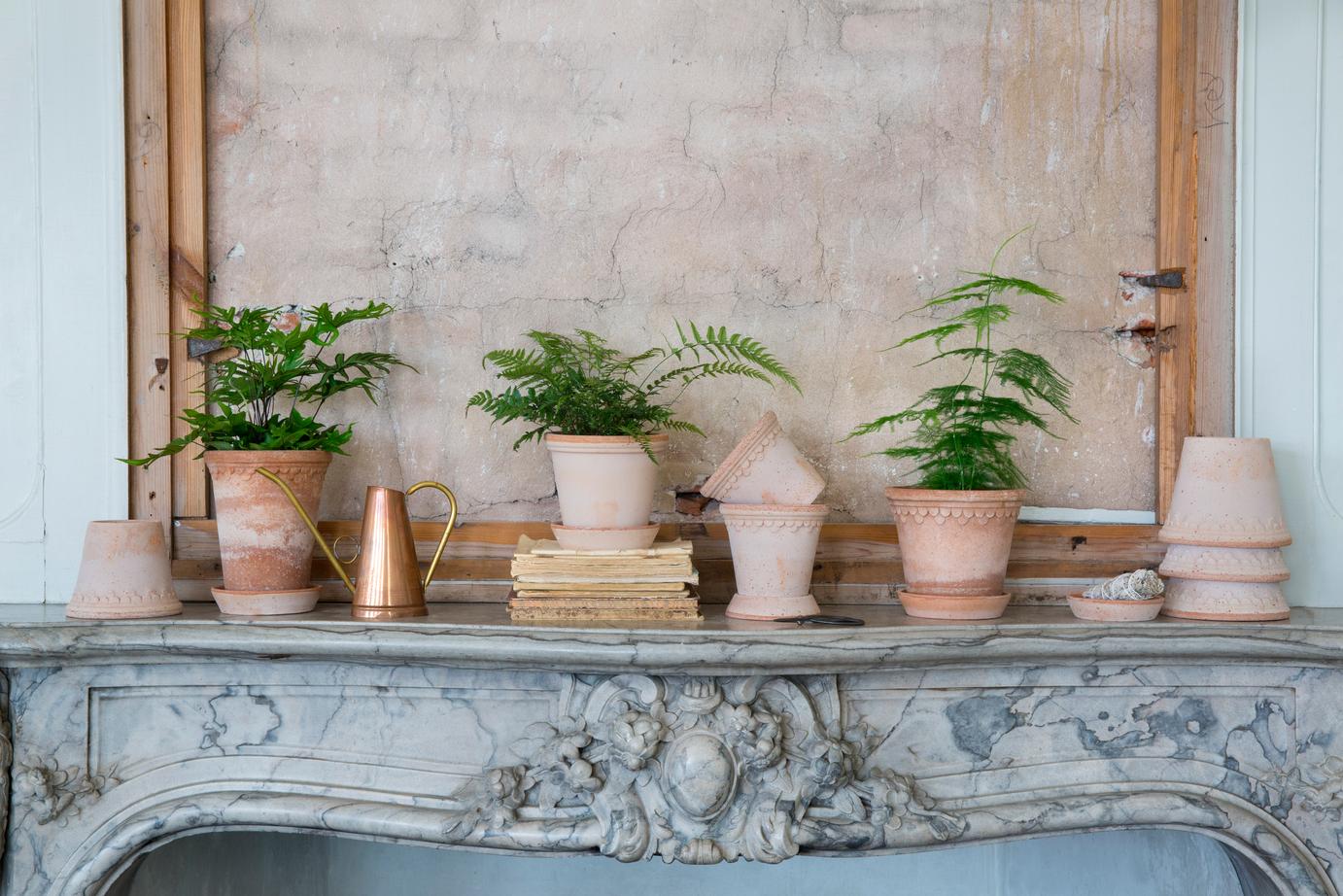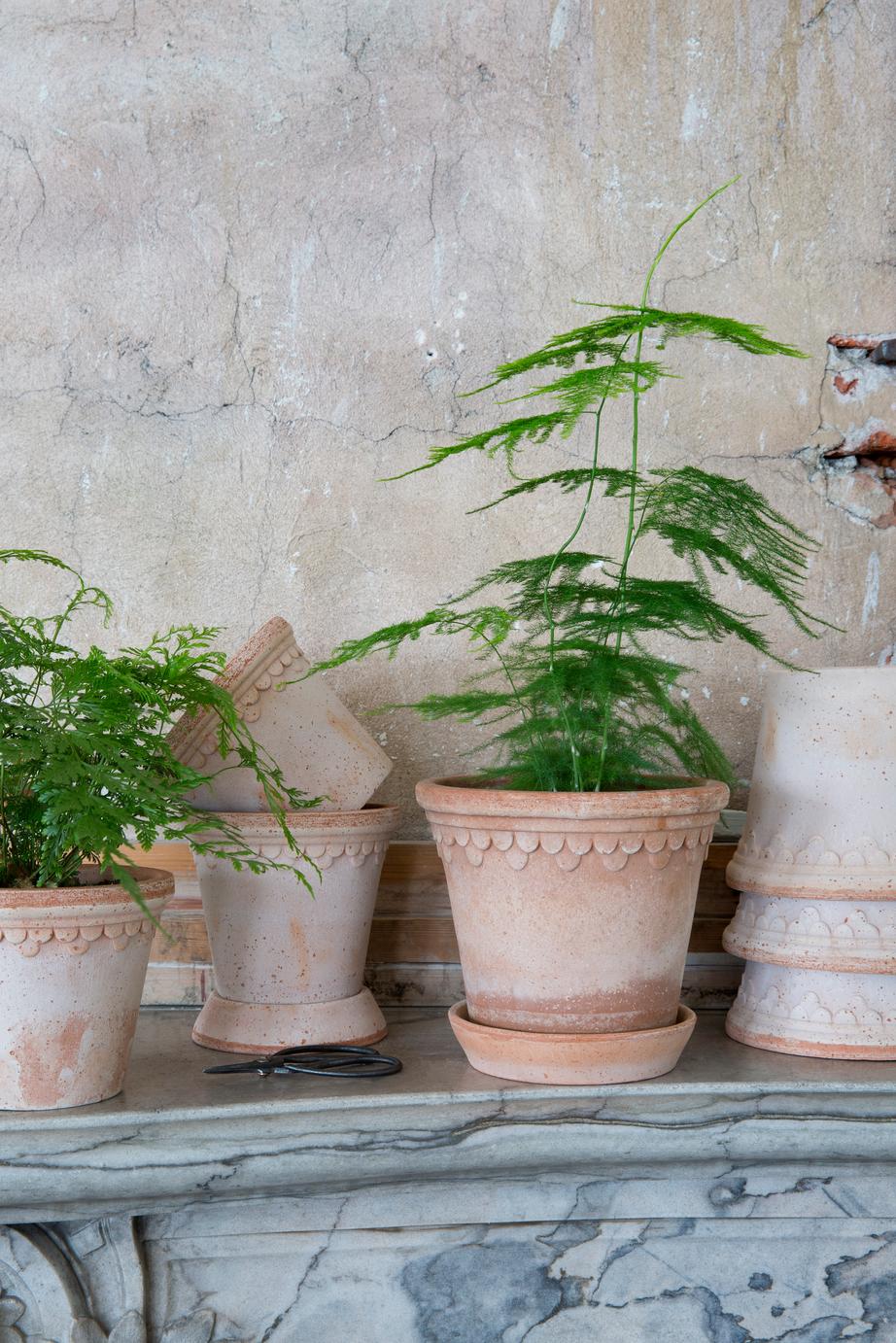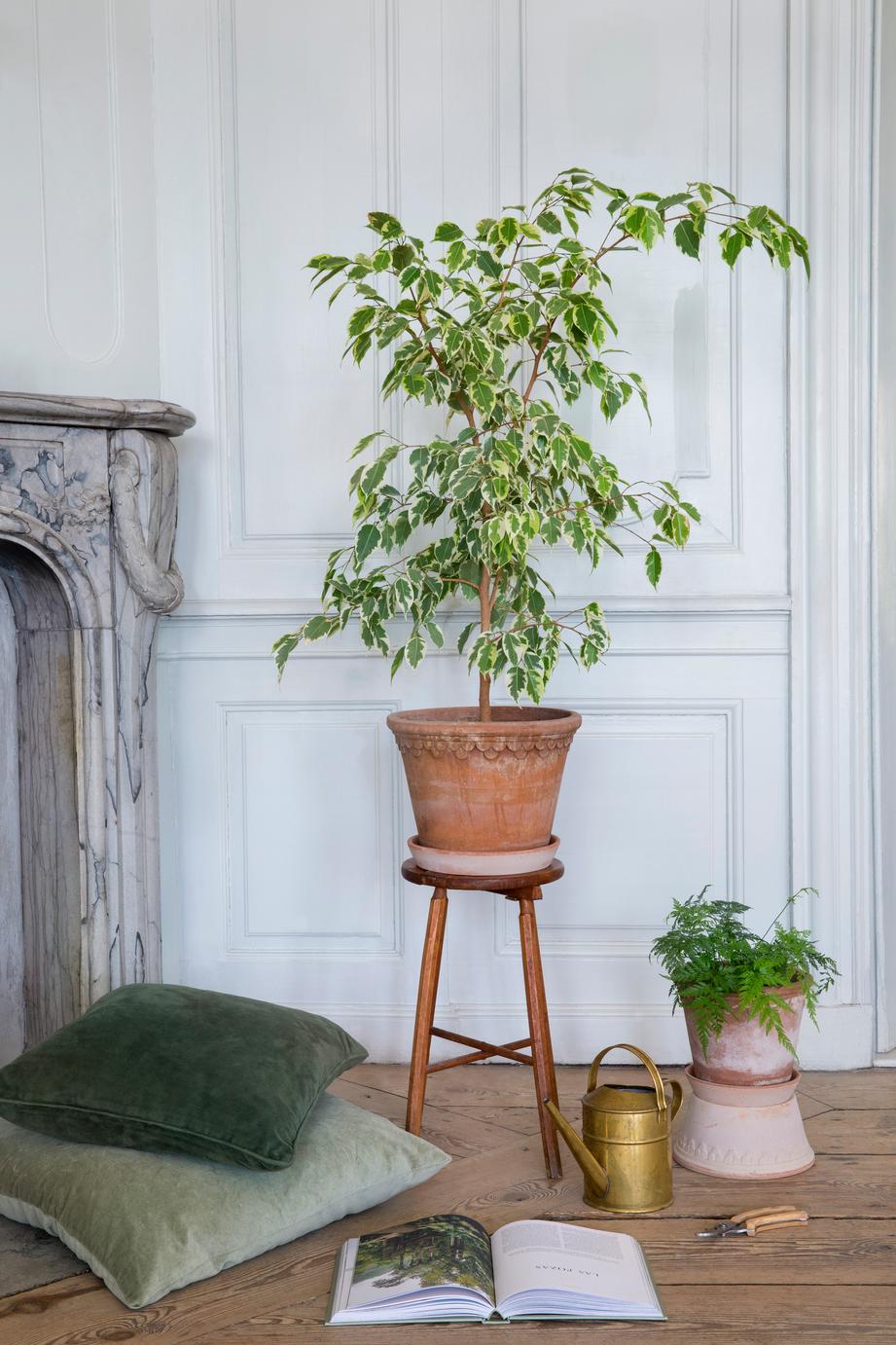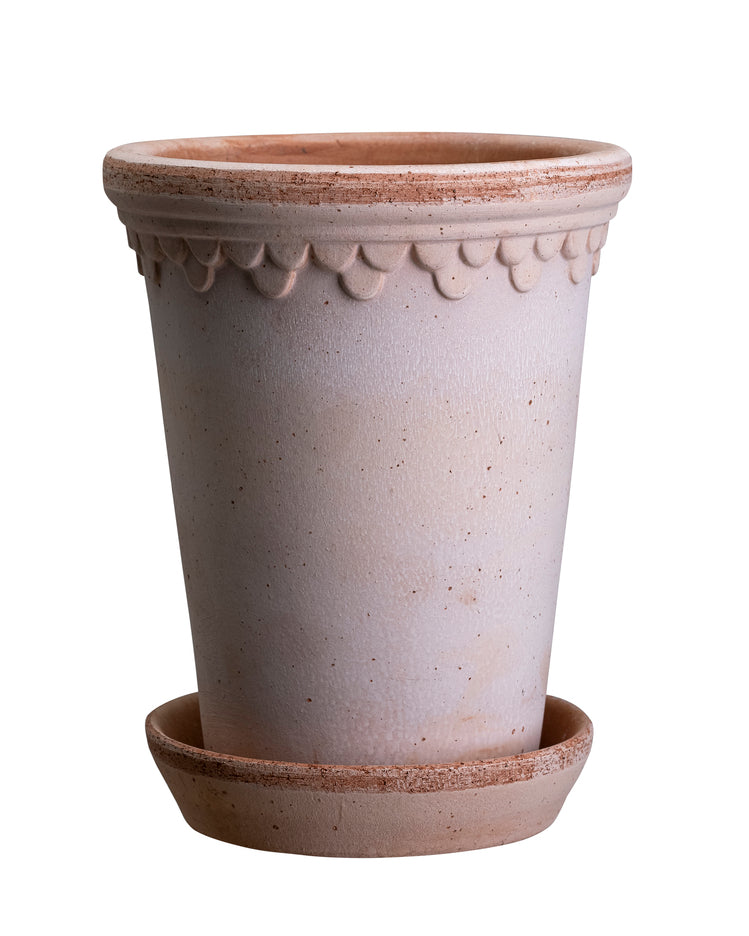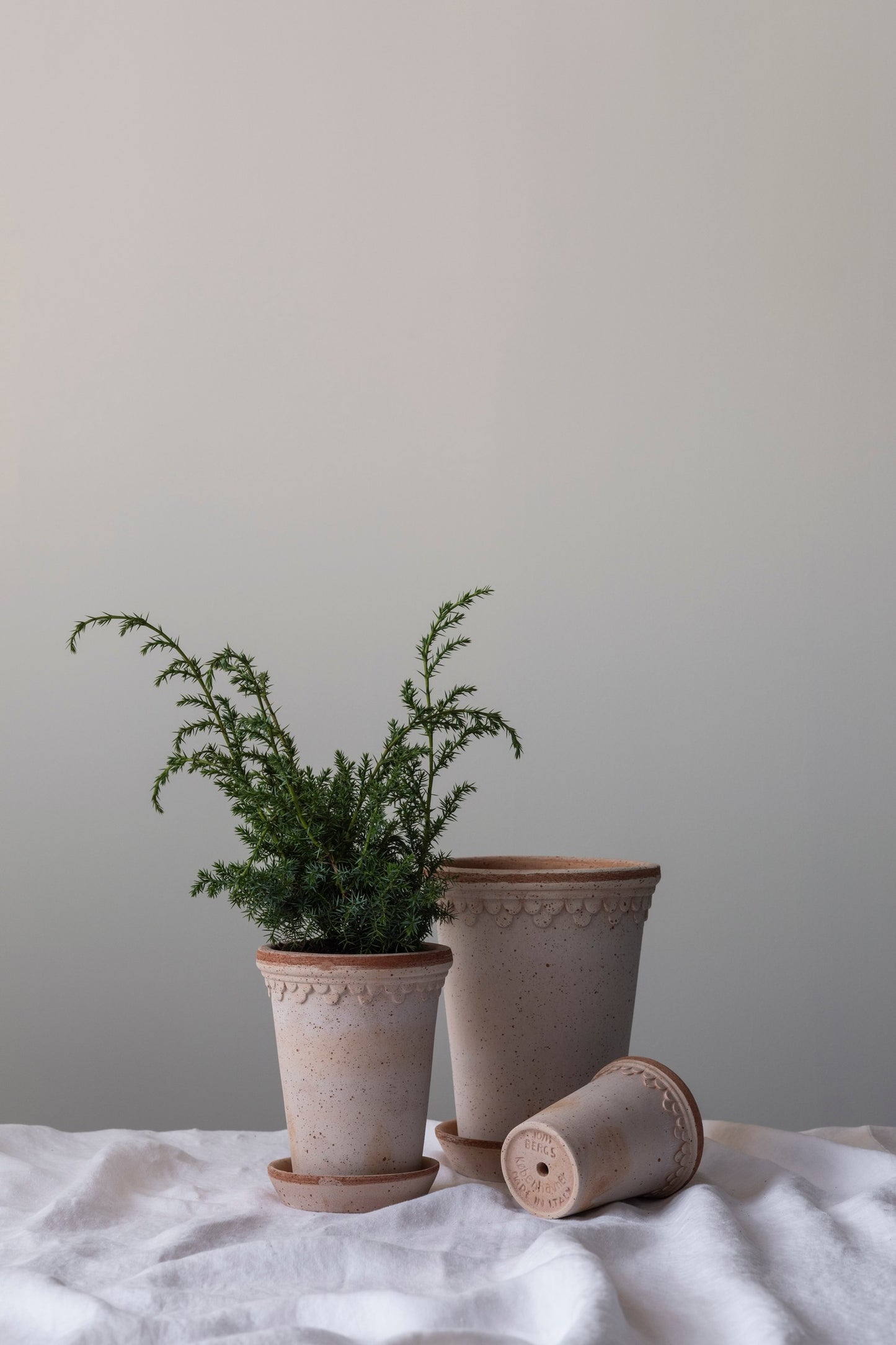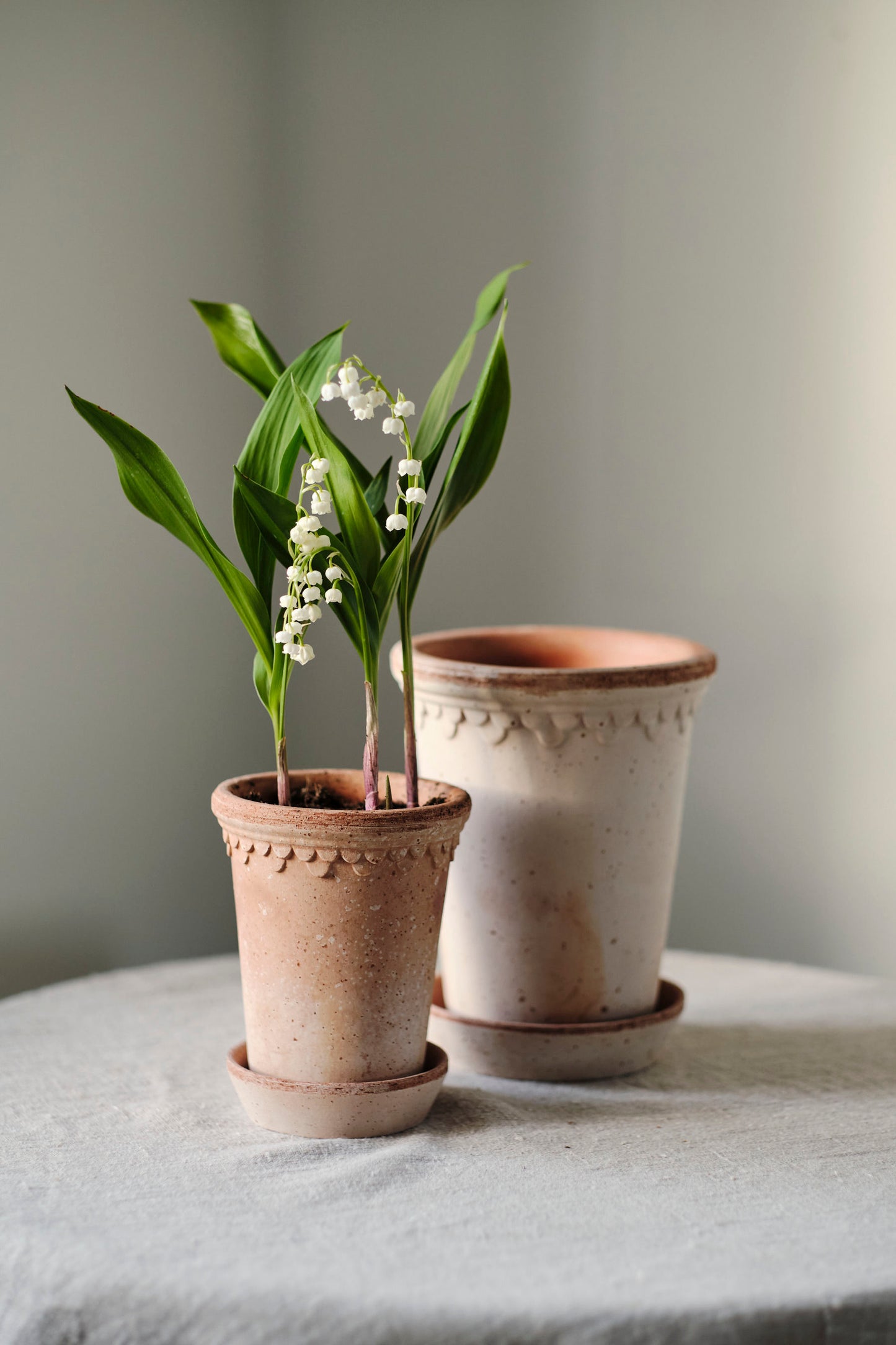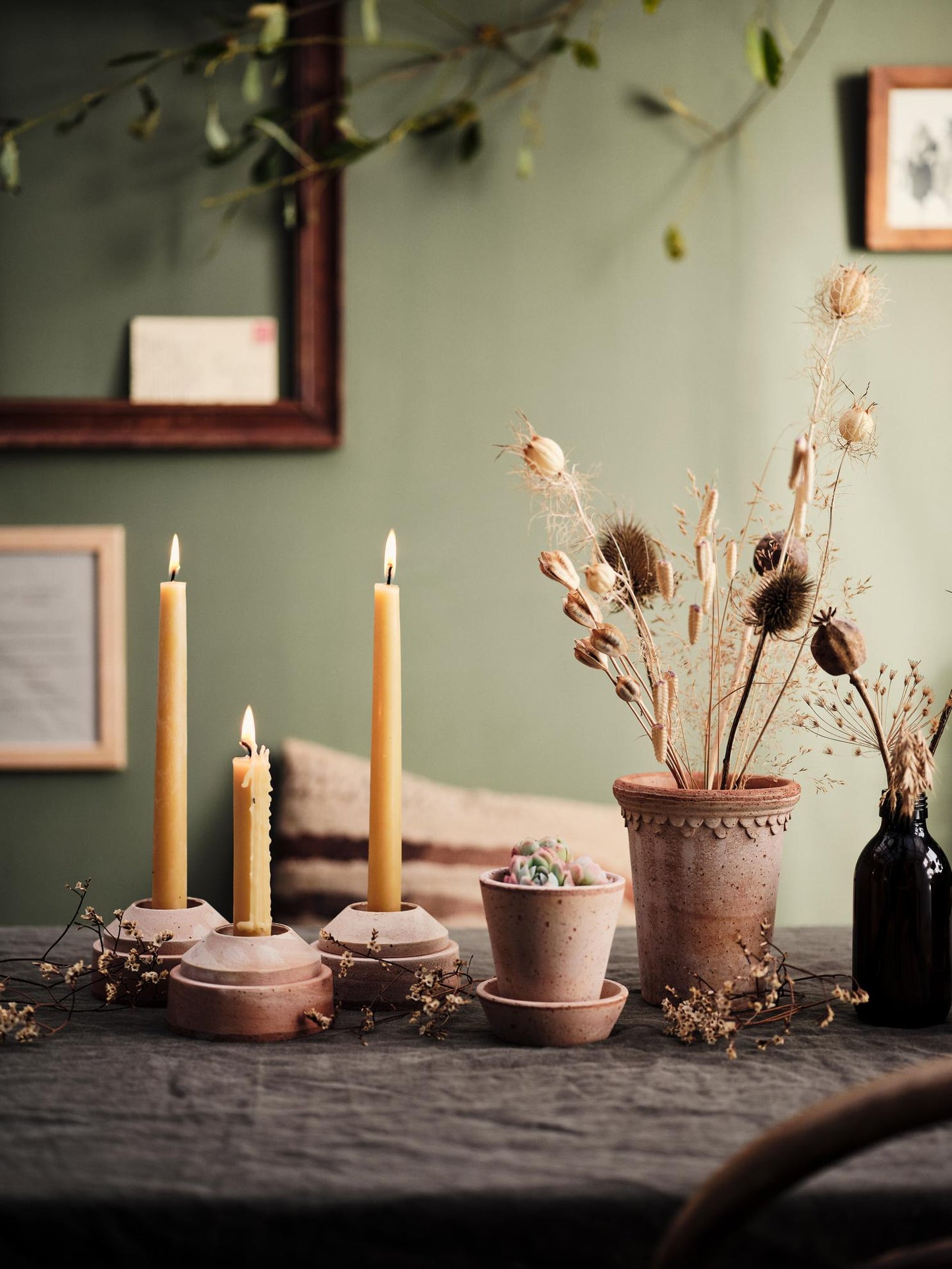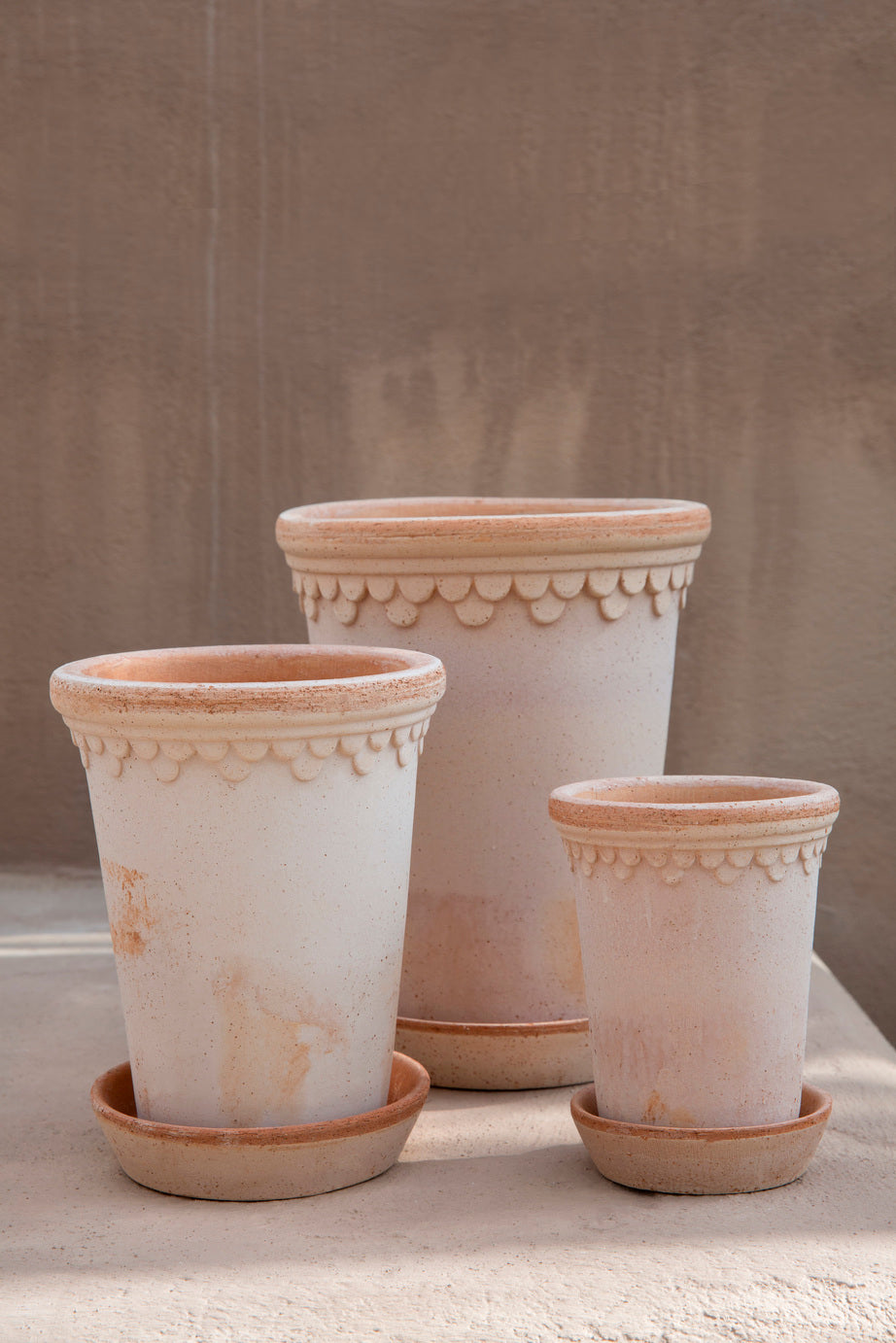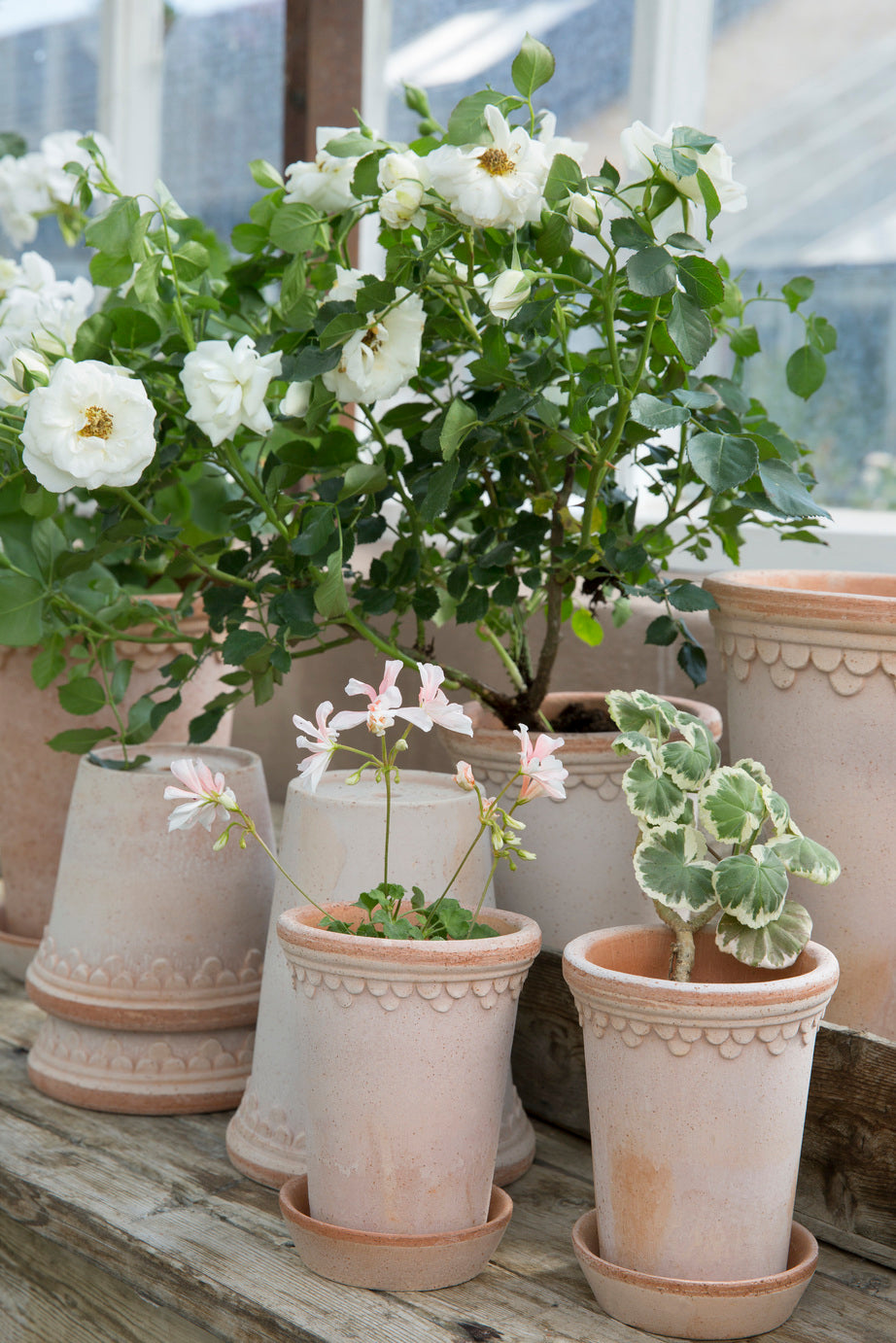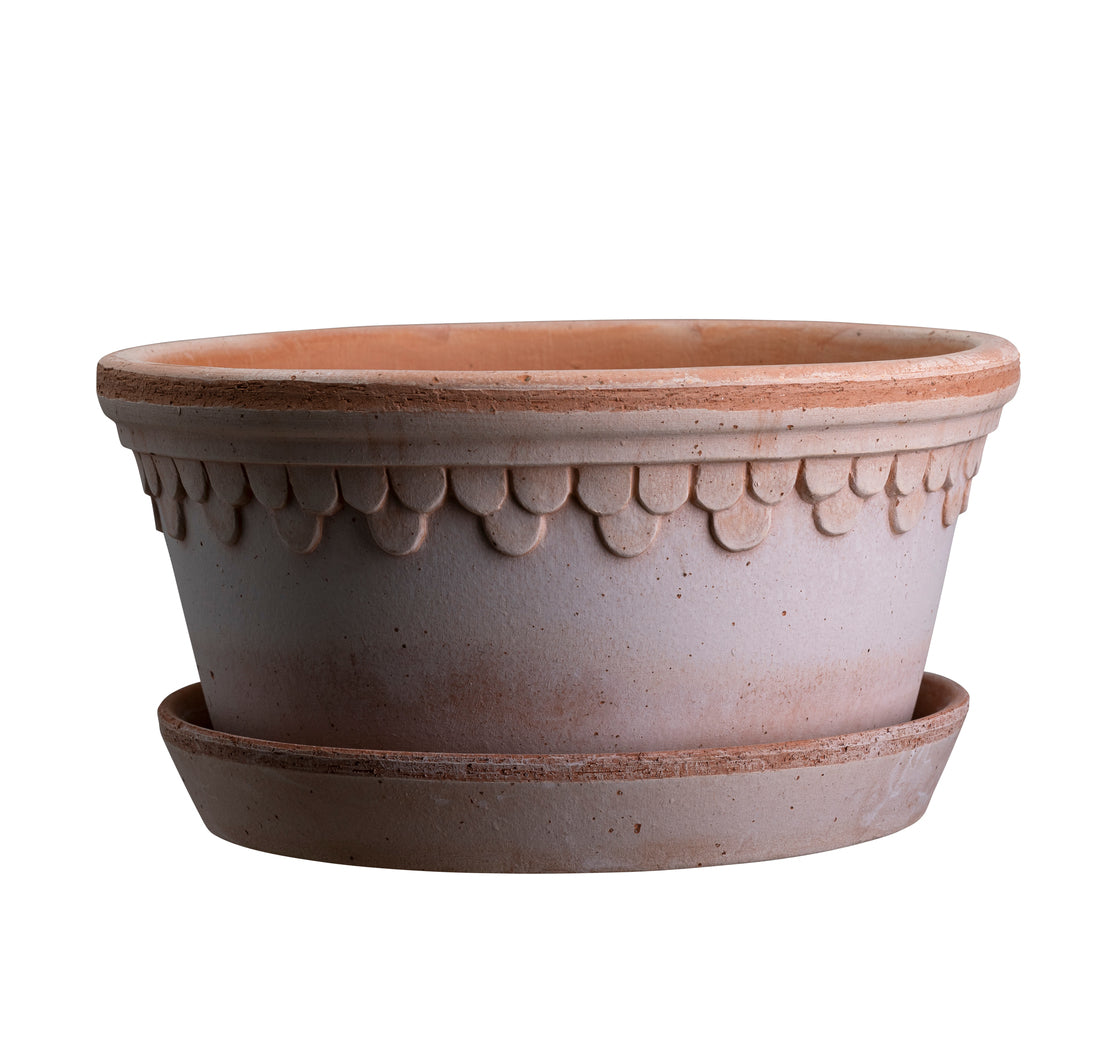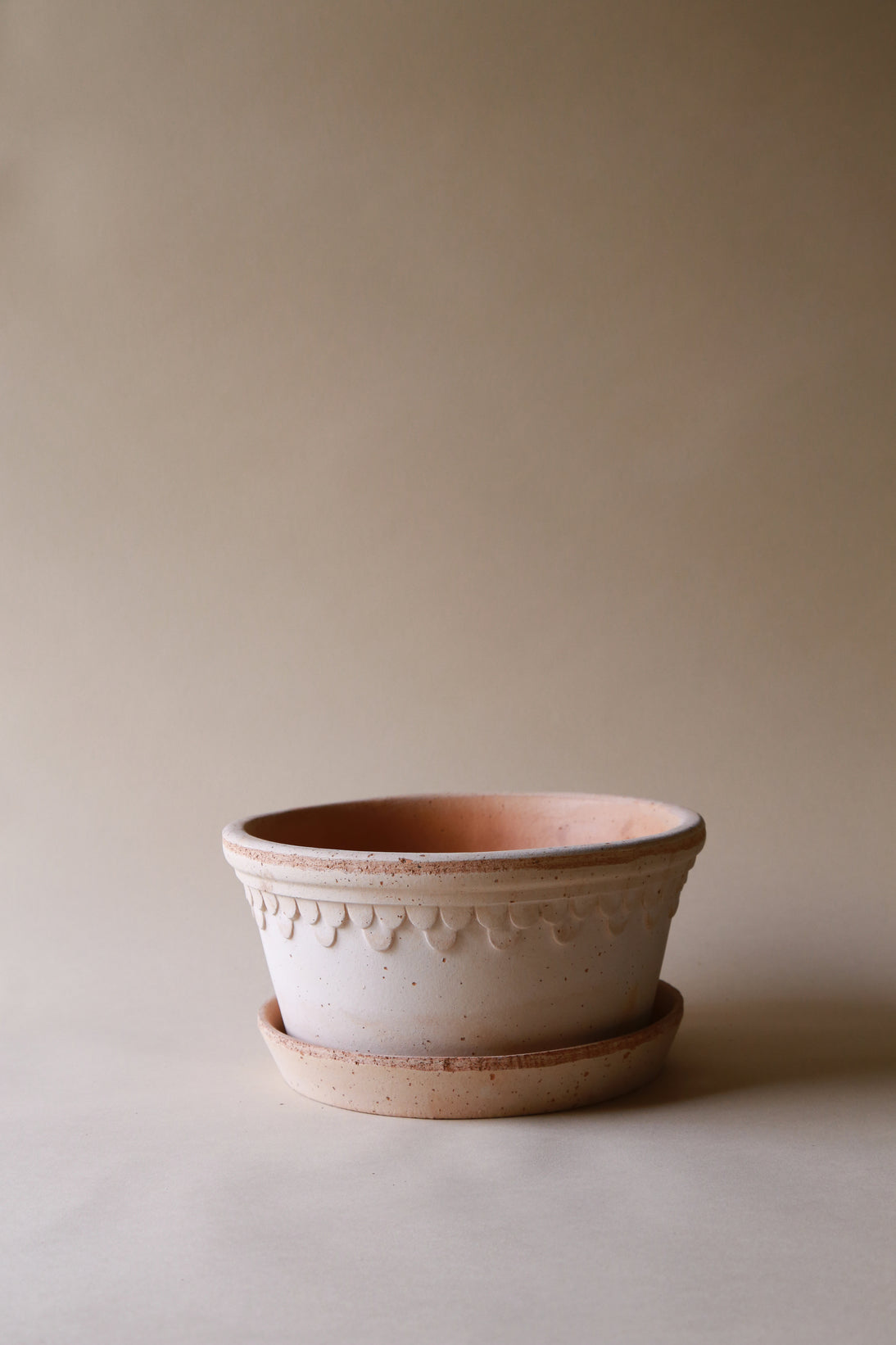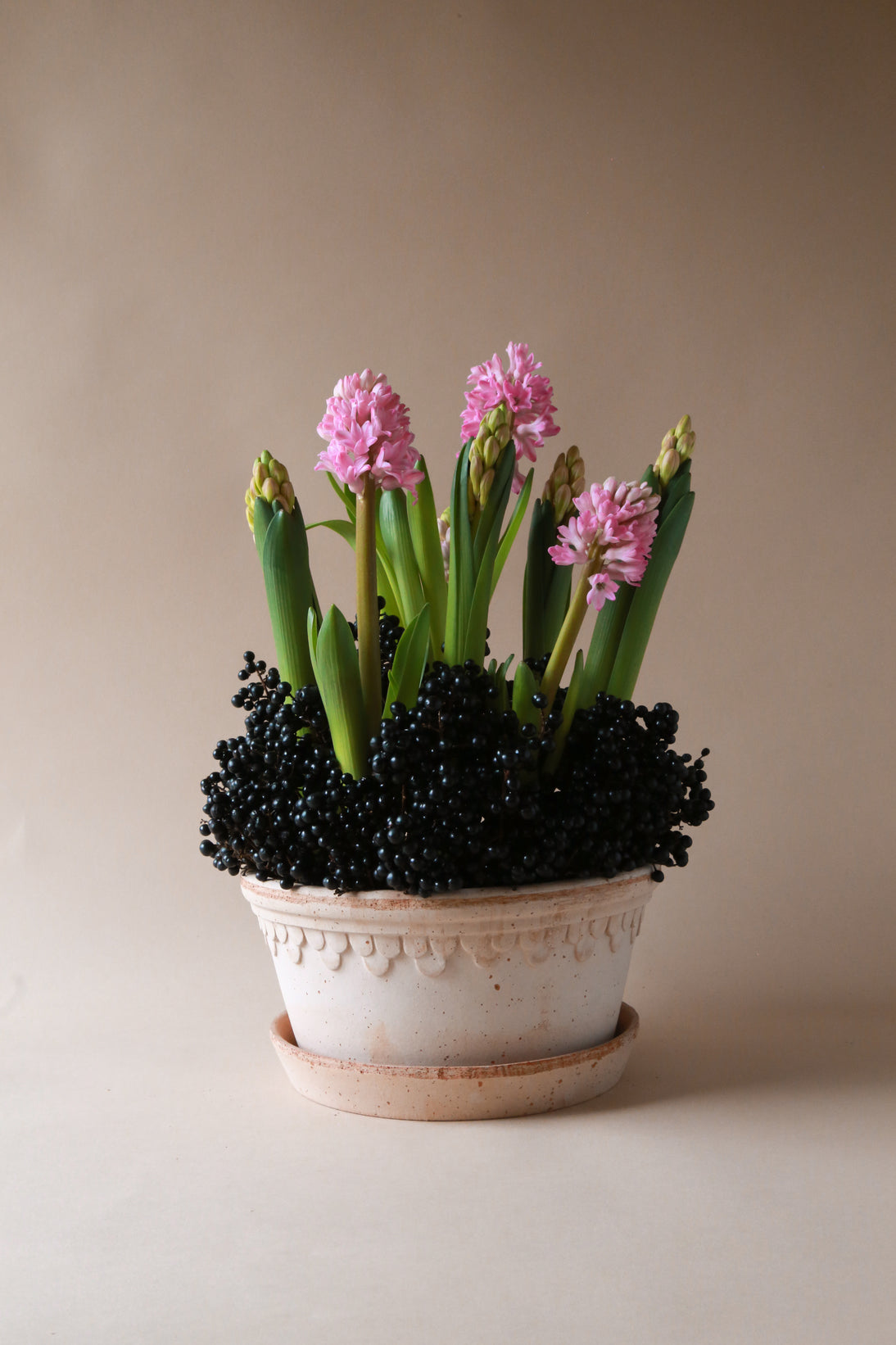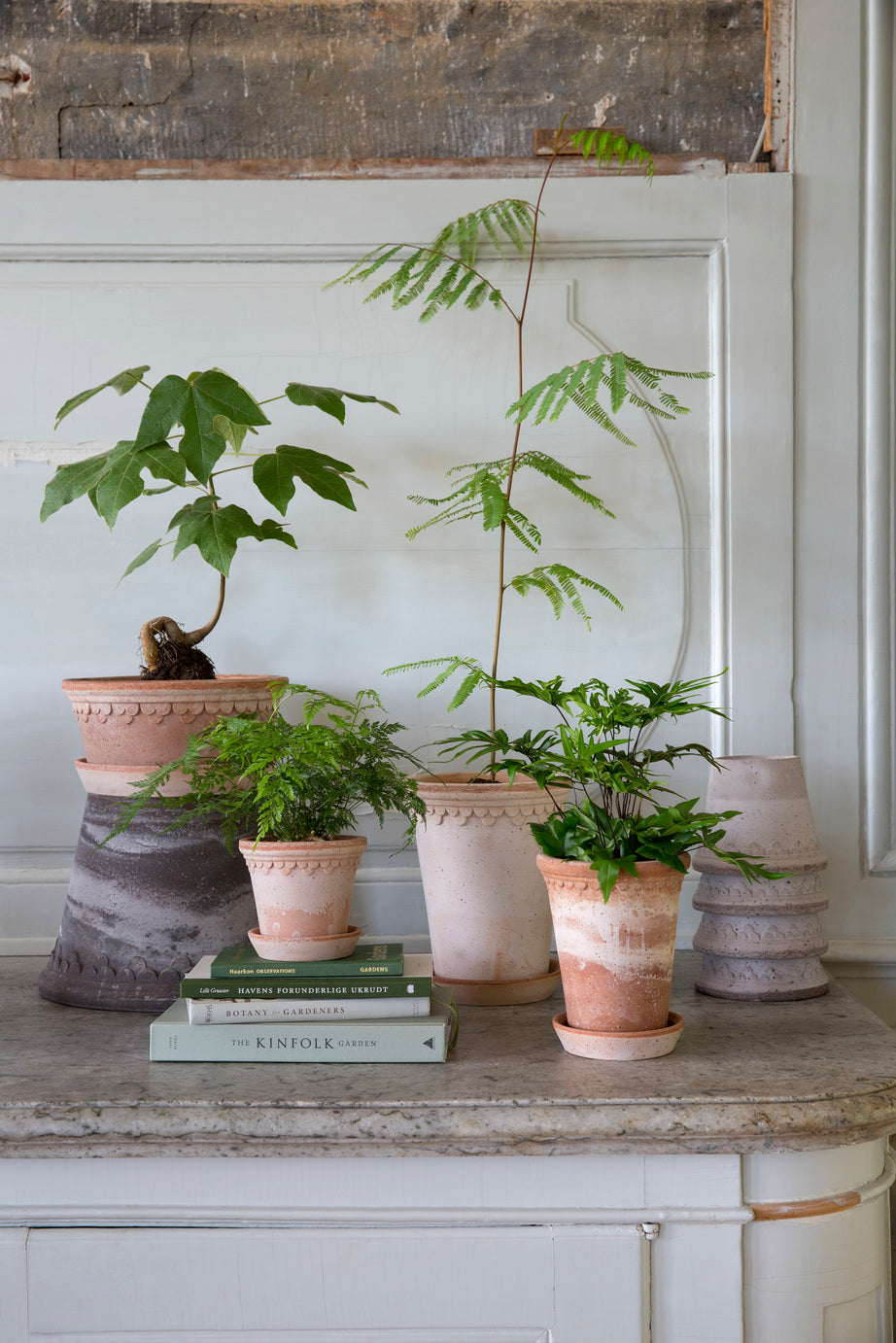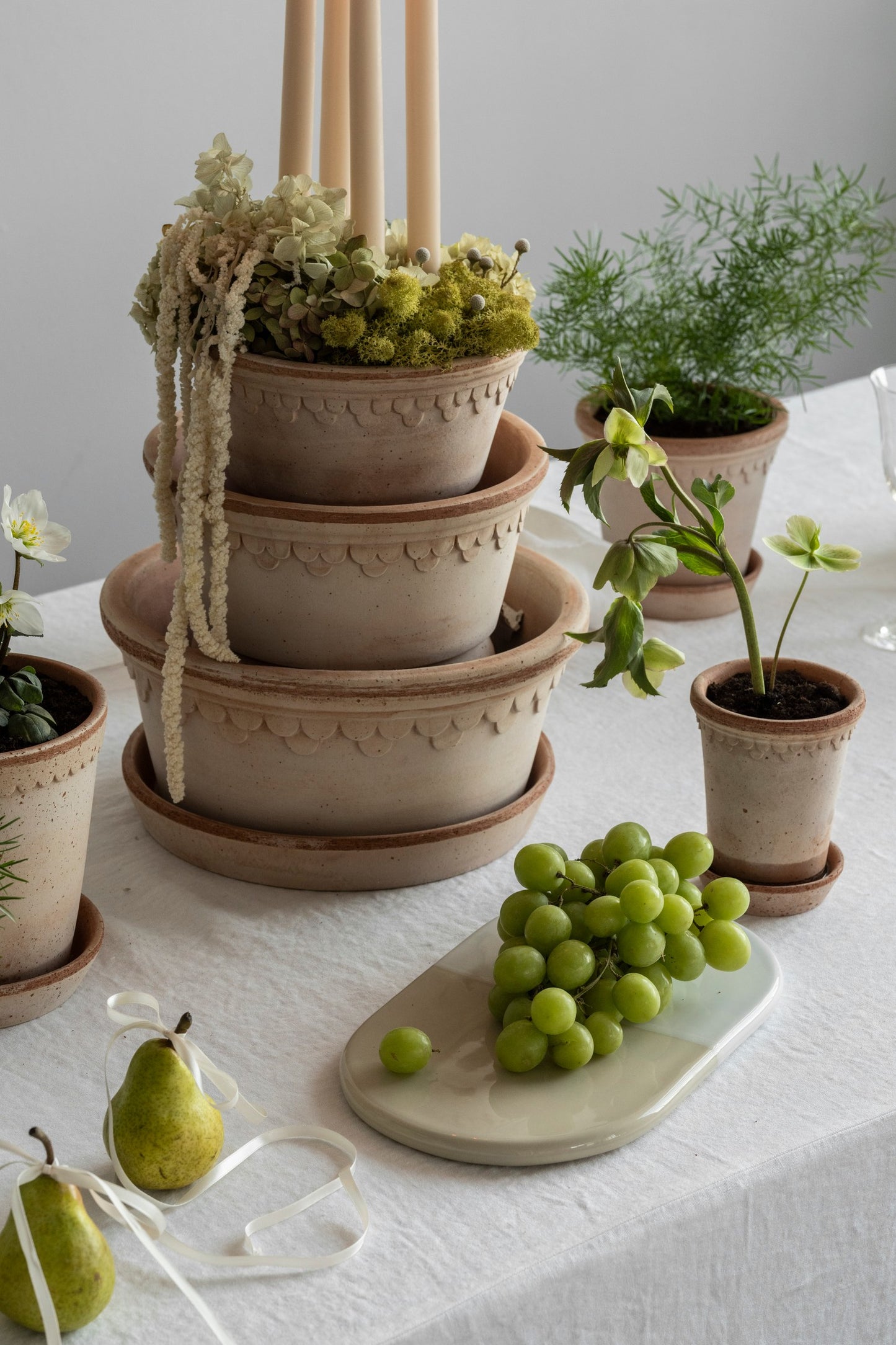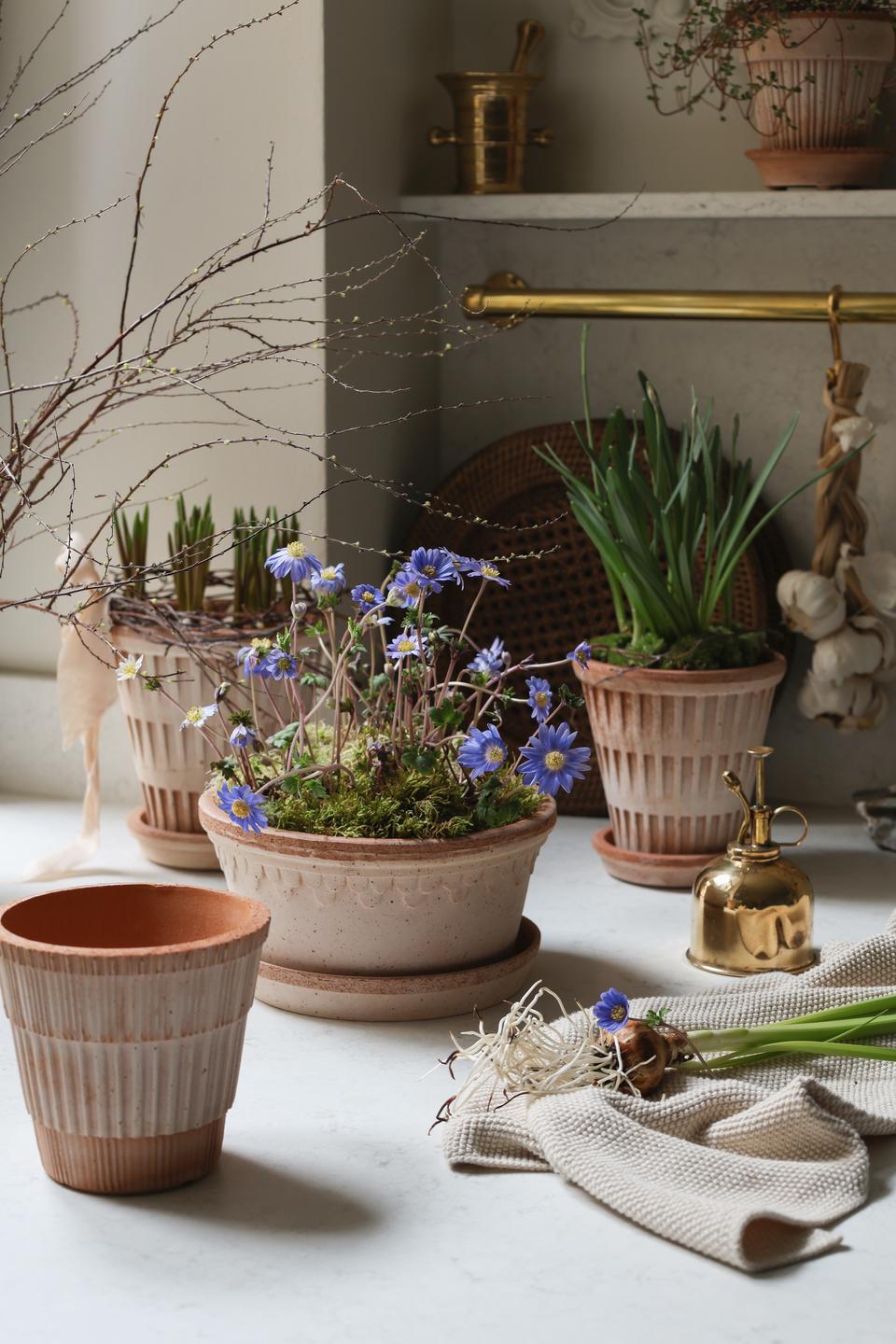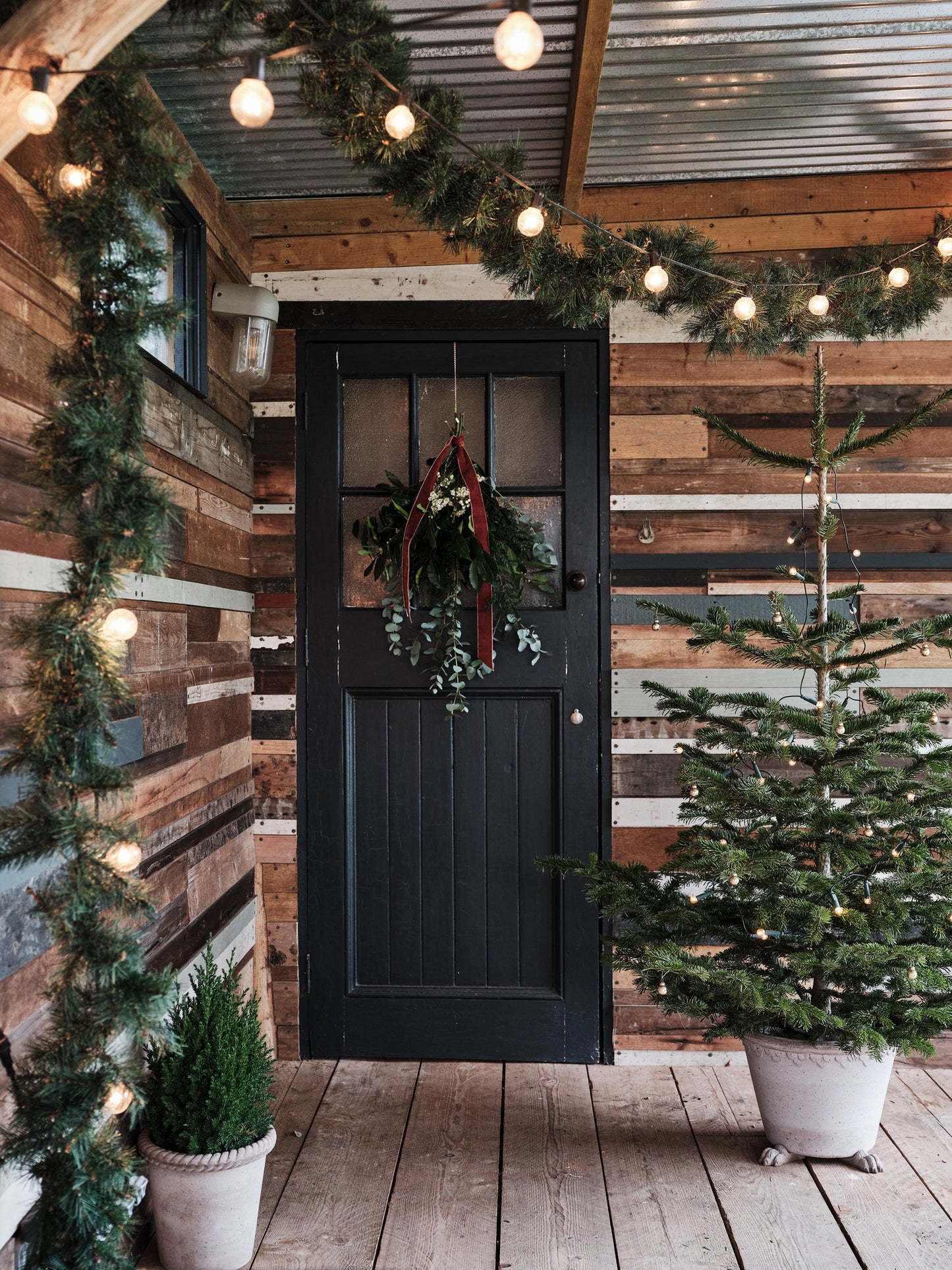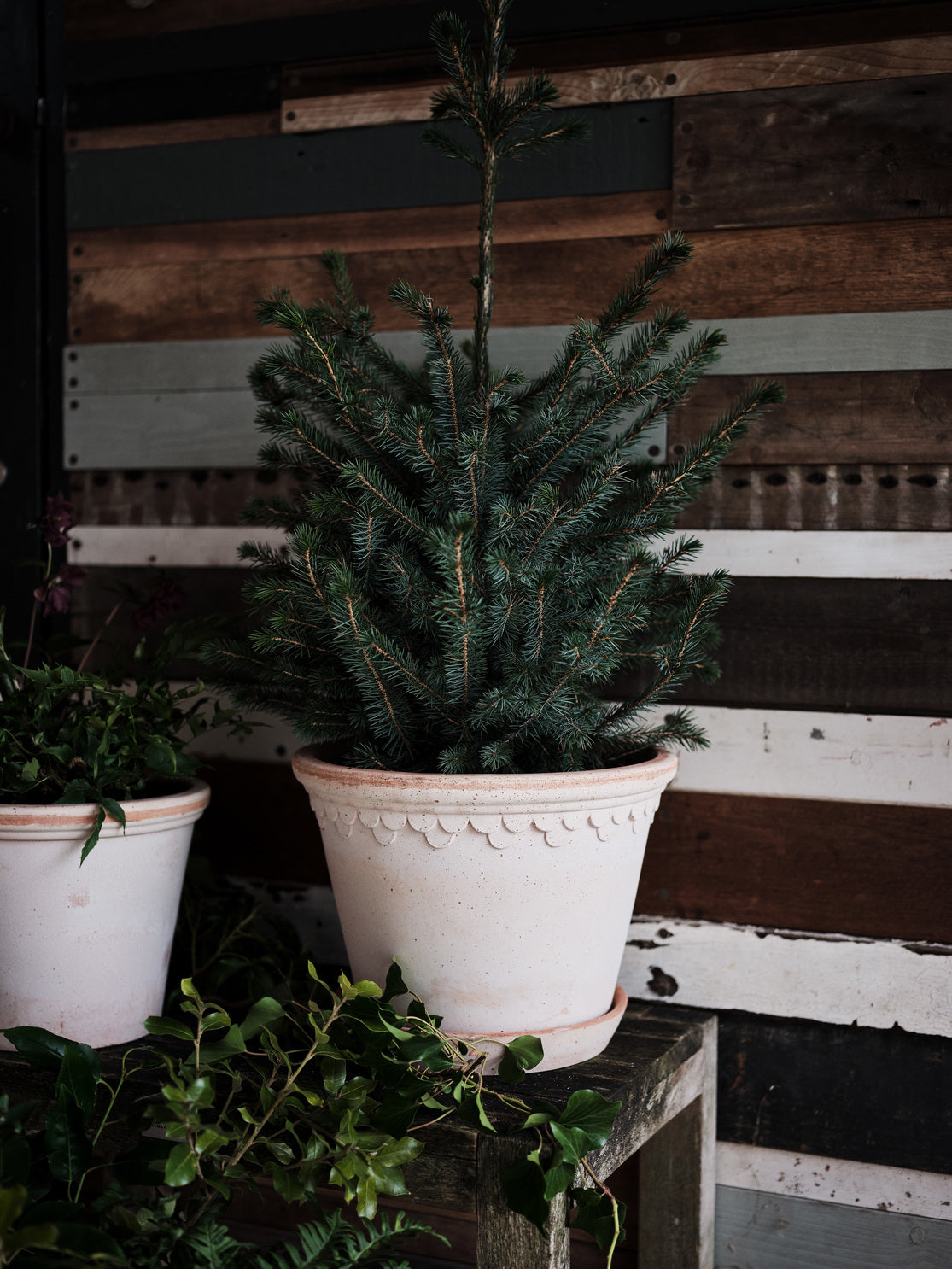Garden Pot Copenhagen - Rosa
Garden Pot Copenhagen - Rosa
Couldn't load pickup availability
The Copenhagen Story
The Castle Pot - The Københavner Pot has royal heritage and is one of the first pots designed by Bergs Potter. This noble pot is inspired by pottery made for the Royal Danish Palace of Fredensborg in 1860.
Years ago, Steffen Berg stumbled upon beautiful old clay pots at a former nursery and created the Københavner Pot, his very own interpretation of the pottery with royal origins. Today, the Københavner Pot is one of our most popular designs, and our potters still make it by hand in small family-owned workshops, keeping the old traditions alive. The legacy of the Københavner Pot adds an element of regal elegance even when paired with the humblest plant.
The Københavner Pot range includes numerous sizes in Rosa and Nordic Grey terracotta, including a tall Rose pots designed to accommodate the rose plant’s deep roots and need for growing space. It is also available in a roomy low pot, which is great for experimenting with succulents, herbs, and bulbs in creative displays.
- made in Italy, designed in Denmark
- each pot varies in color variations and textures due to the handmade nature of each pot adding a little extra character to each one!
Variants
Standard Pot.
|
Low Pot.
|
Tall Pot.
|
| Diameter | Height | |
| 10 | 10cm/3.9in | 9cm/3.5in |
| 10 rose | 10cm/3.9in | 14cm/5.5in |
| 12 | 12cm/4.7in | 11cm/4.3in |
| 14 | 14cm/5.5in | 12cm/4.7in |
| 14 rose | 14cm/5.5in | 19cm/7.5in |
| 16 | 16cm/6.3in | 14cm/5.5in |
| 18 | 18cm/7.1in | 16cm/6.3in |
| 21 | 21cm/8.3in | 19cm/7.5in |
| 25 | 25cm/9.8in | 22cm/8.5in |
| 25 low | 25cm/9.8in | 12cm/4.7in |
| 30 | 30cm/11.8in | 25cm/9.8in |
| 35 | 35cm/13.8in | 28cm/10.8in |
A note on Freckling
Let's talk a little bit about 'freckles'. This is what we have named the little visible grains of colour that occasionally appears on our natural raw clay pots.
The reason for the freckles is that we use organic and untreated Italian Galestro clay - the best clay available. The 'freckles' are tiny pieces of calcium or other minerals that are naturally found in the clay.
The freckles are more pronounced on some lots of clay due to variations in soil conditions in Tuscany, Italy. However, it is a characteristic that many of the Italian potters think is a beautiful characteristic. And so do we.
As with us humans - freckles is a sign of summer. The same goes for pots. Most often 'freckle formation' occurs during the summer period when it is ridiculously hot, and the clay dries faster. So, when you see a freckled pot - you know that it is 'summer baby - produced during the hot and sunny season.
It often happens the 'freckles' are loose and fall of and leaves a bit of residue. Luckily, this only happens once. We therefore advise, to soak and wash the pots with a soft brush before using - and you will avoid cleaning up 'fallen freckles'.
We hope you love our pots - freckles or not.
More on Bergs Potter
The raw clay pots by Bergs Potter are made of premium Italian clay, fired at extremely high temperatures — and nothing else. No chemicals — just the pure beauty of nature. Each of the raw terracotta pots is inherently natural, ages gracefully, and develops a beautiful patina over time. The saucers are given a special finish that makes them waterproof and prevents mould from developing. Whether they are used as a centrepiece for the dining table, to grace the window sill, or to house a large plant on your wooden floors, the beautiful pots will help add a touch of nature to every corner of the home.Breathing pots - Bergs Potter’s terracotta pots are made with Italy’s finest clay. The minerals in the clay and its high density give the pots the perfect balance of strength and porosity, allowing the pots to breathe and making them naturally resistant to frost. When a pot is watered, it changes colour, which means it breathes. When the pot breathes, it can supply moisture and air to the roots, giving the plant the best possible conditions for growth. Terracotta is a porous material, and the evaporation of water through its pores helps maintain moisture levels and airflow, while the clay’s insulating properties help regulate root temperature.
